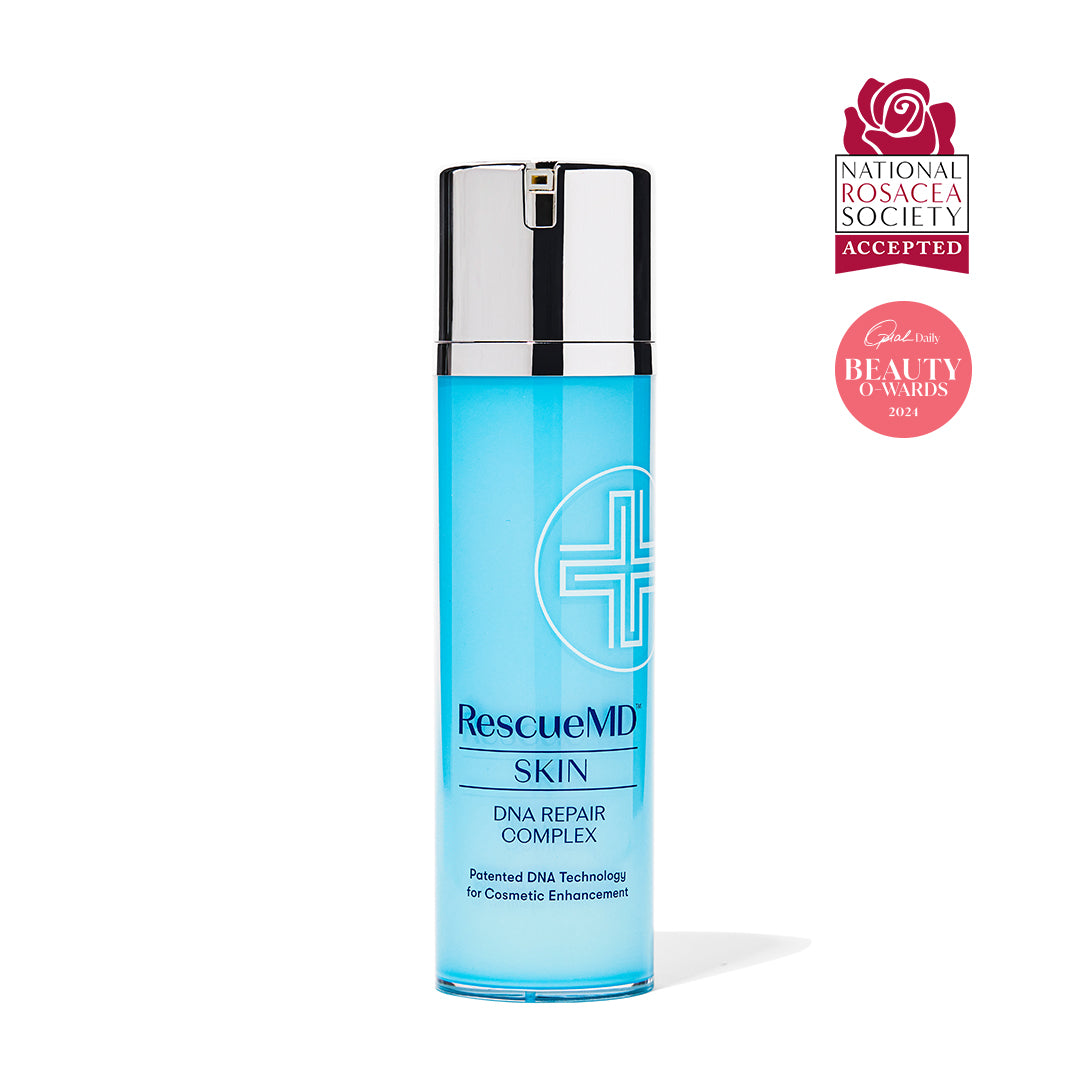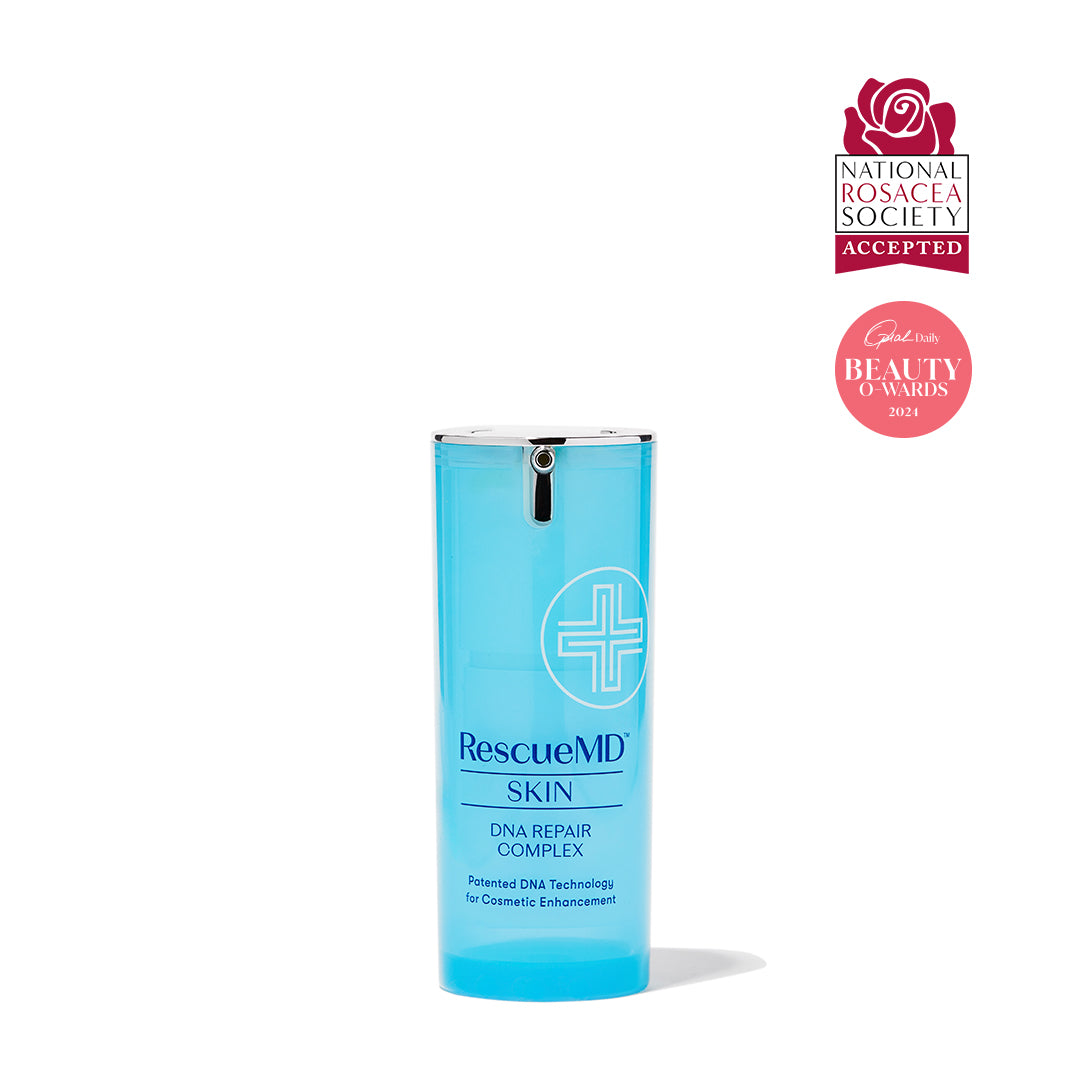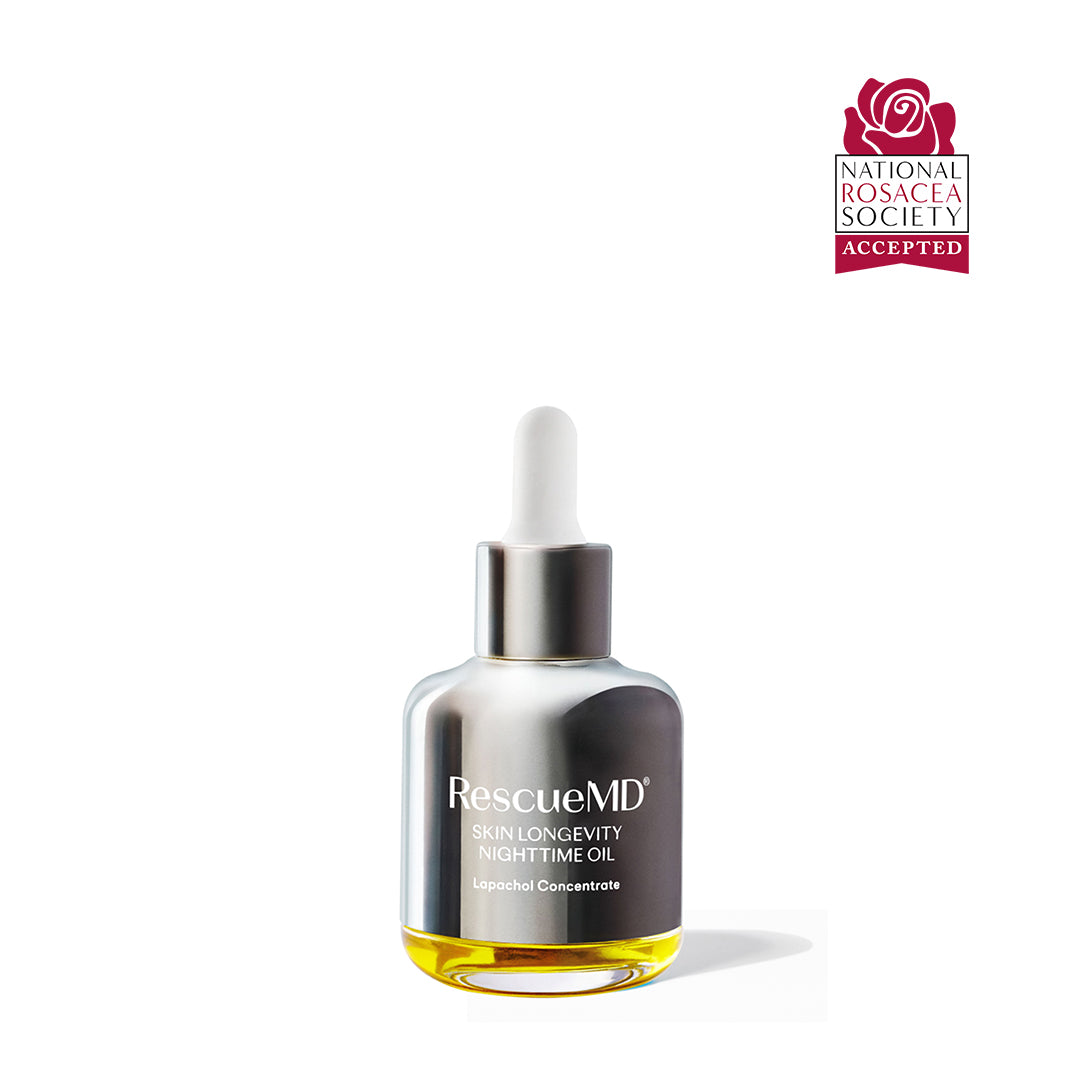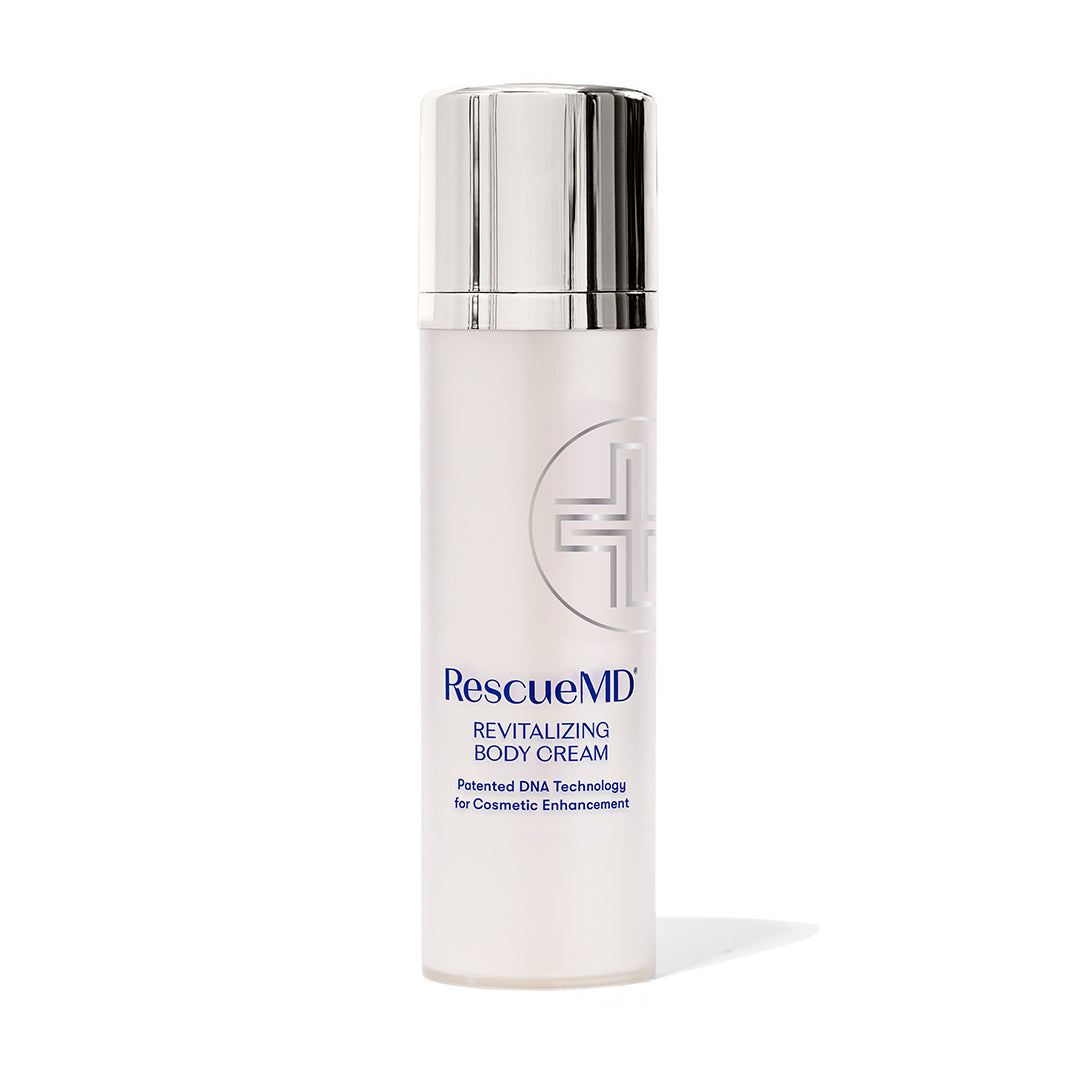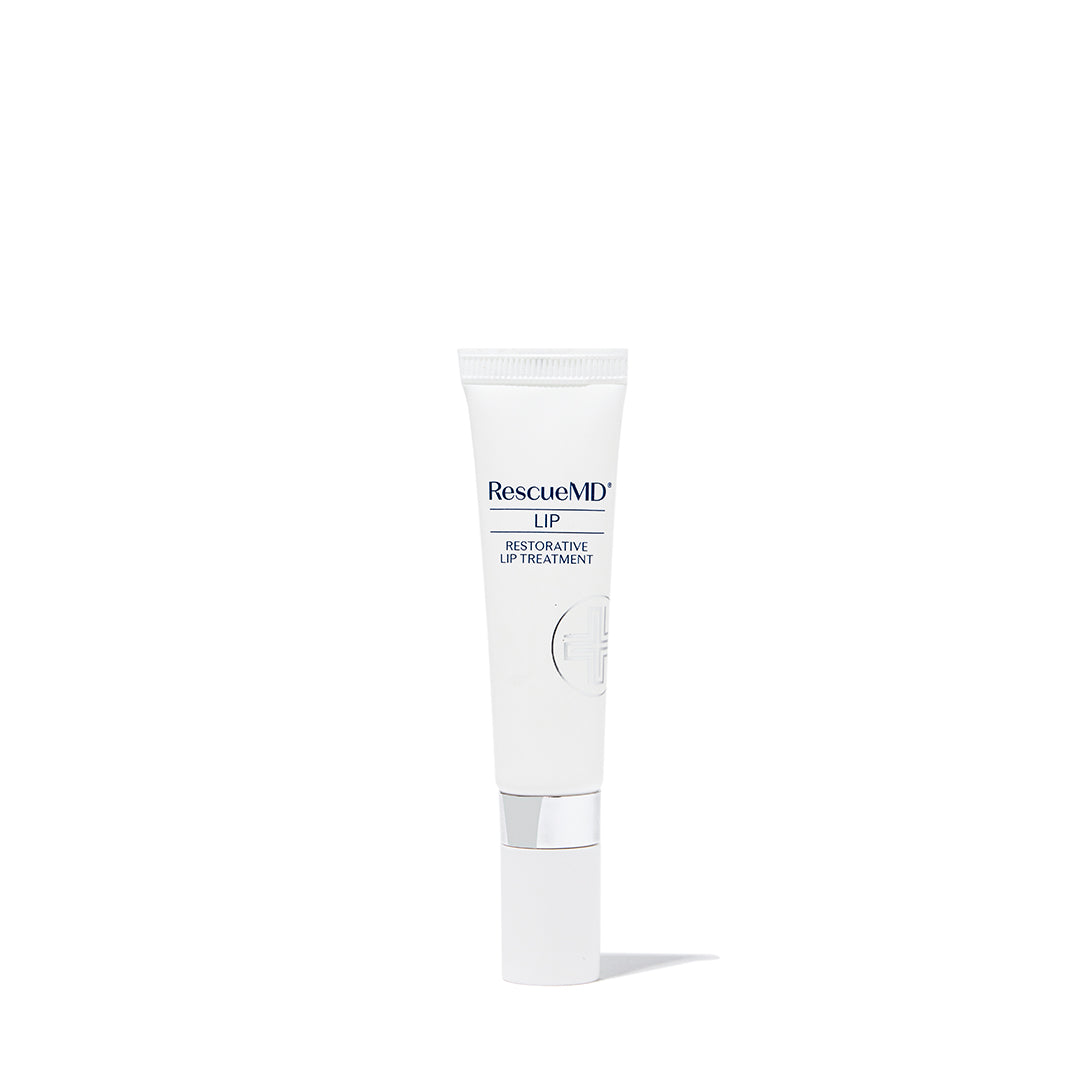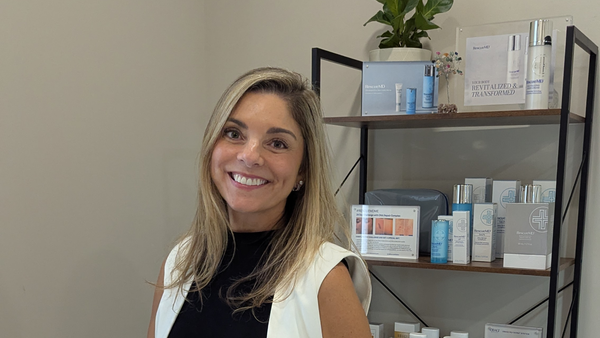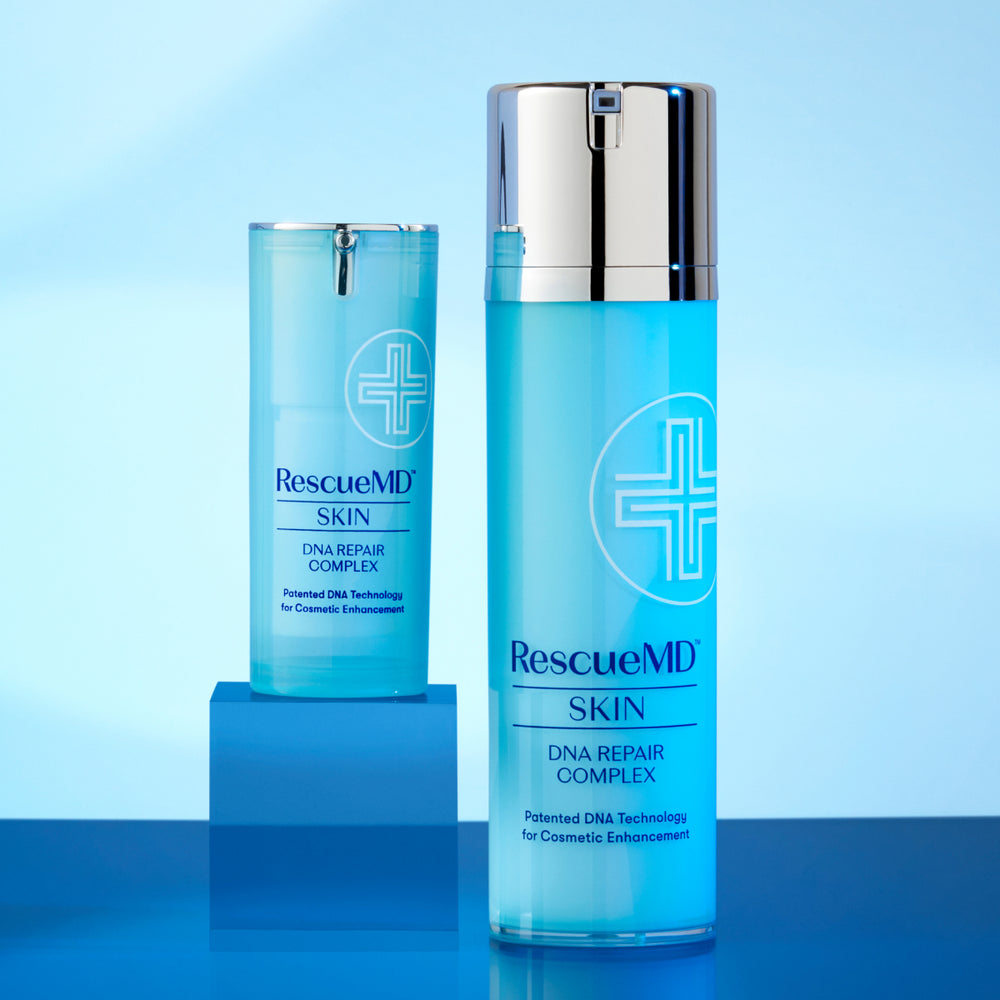Did you know that April is Rosacea Awareness Month? Rosacea is a chronic skin condition that can pose challenges for those affected. Understanding its causes and triggers is key to managing its symptoms effectively. Dr. Michael Suzman, FACS, walks us through the intricacies of this common condition and shares some best practices for managing this condition. Read on to learn more.
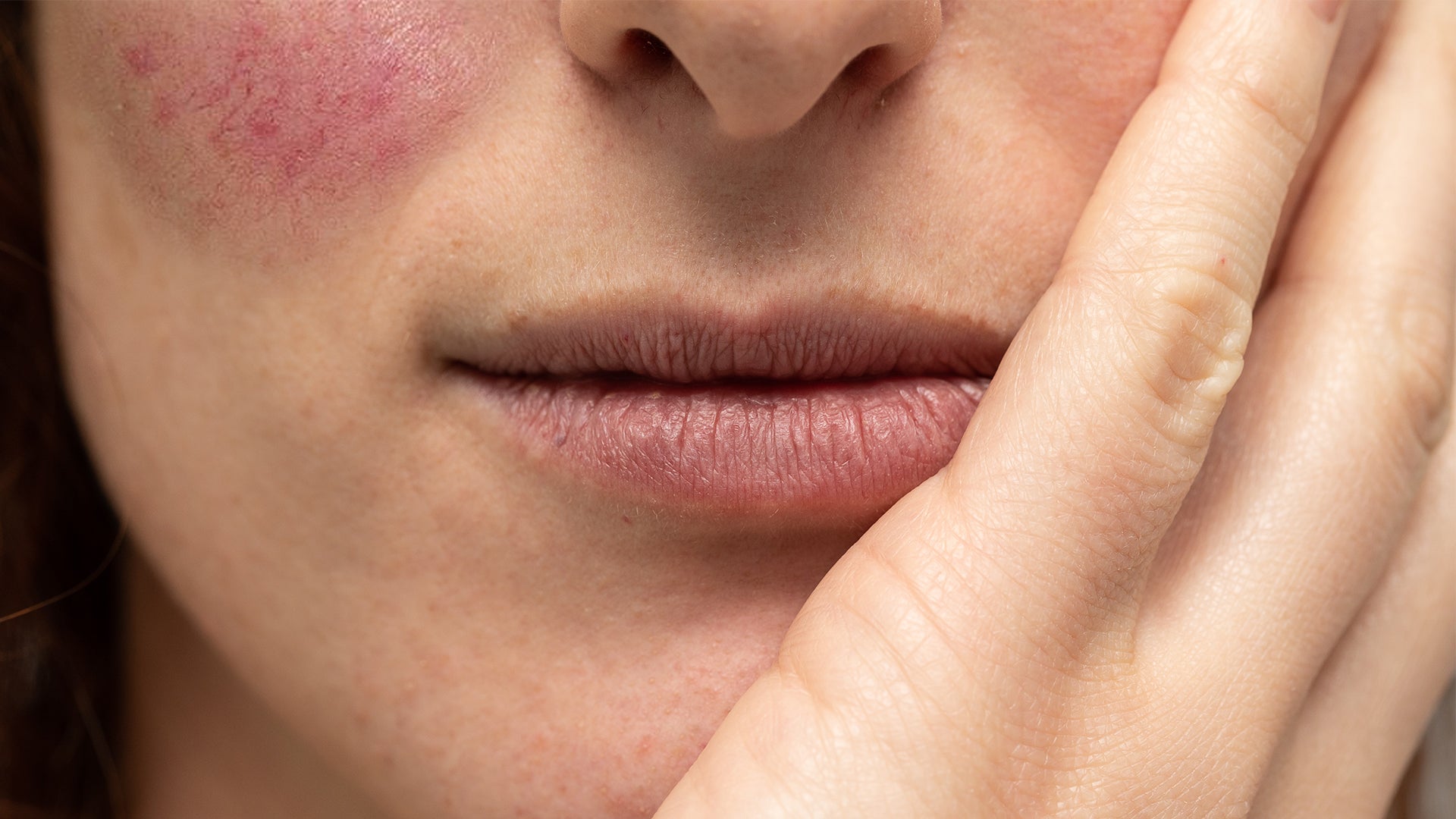
What is rosacea and what causes it?
Rosacea is a chronic skin condition that primarily affects the face. It is characterized by facial redness, visible blood vessels, swelling, and sometimes small, pus-filled bumps. Rosacea can also cause symptoms such as eye irritation, burning or stinging sensations, and thickened skin. While its exact cause is unknown, factors such as genetics, environmental triggers, and abnormalities in the immune system are believed to contribute to its development.
What are common factors that may trigger rosacea?
Many everyday factors may trigger a rosacea flareup:
- Sun exposure: UV rays can worsen rosacea symptoms.
- Hot weather: High temperatures and humidity can lead to flushing and redness.
- Spicy foods: Hot and spicy foods may trigger flushing and inflammation.
- Hot beverages: Coffee, tea, and other hot drinks can aggravate rosacea symptoms.
- Alcohol: Red wine, beer, and other alcoholic beverages can cause flushing and exacerbate rosacea.
- Stress: Emotional stress can trigger rosacea flare-ups.
- Certain skincare products: Harsh cleansers, exfoliants, and cosmetics containing alcohol or fragrances can irritate the skin.
- Wind: Windy conditions can worsen facial redness and irritation.
- Vigorous exercise: Intense physical activity can lead to flushing and increased blood flow to the face.
- Hot baths or saunas: Heat can exacerbate rosacea symptoms, so it's best to avoid prolonged exposure to hot water or steam.
In most cases, rosacea is harmless, and just mild or a nuisance. But its severe forms take a significant toll on patients emotionally and physically.
What is rosacea characterized by and how can it present within the skin?
Rosacea is characterized by persistent redness, flushing, and visible blood vessels on the face. It can present within the skin in various ways, including:
- Facial redness: Rosacea often starts with a tendency to blush or flush easily. Over time, the redness may become more persistent and widespread, particularly on the cheeks, nose, forehead, and chin.
- Visible blood vessels: Small blood vessels (telangiectasia) may become visible on the surface of the skin, especially in areas prone to redness.
- Swelling: Facial swelling, particularly around the nose (rhinophyma), may occur in some cases, giving the nose a bulbous appearance.
- Acne-like bumps: Rosacea can cause small, red, pus-filled bumps (papules and pustules) to develop on the face, resembling acne. These bumps are often tender and may come and go in flare-ups.
- Thickened skin: In more severe cases, the skin on the nose, cheeks, forehead, or chin may become thickened and bumpy, a condition known as phymatous rosacea.
- Eye symptoms: Ocular rosacea can involve eye irritation, dryness, redness, and sensitivity to light (photophobia).
*In a dermatologist-led clinical study, DNA Repair Complex was clinically proven to reduce redness in 96% of subjects observed for improvement.
What is a typical treatment for someone with rosacea?
Treatment typically involves lifestyle changes, topical medications, oral antibiotics, or other medical interventions to manage symptoms and prevent flare-ups.
What at-home products are appropriate and recommended for rosacea prone skin?
When selecting products for rosacea-prone skin, it's essential to choose gentle, non-irritating options that help to soothe inflammation and maintain the skin's natural barrier. Dr. Suzman recommends a gentle, soothing and protective regimen such as follows:
- Gentle cleanser: Use a mild, non-abrasive cleanser that is fragrance-free and designed for sensitive skin. Avoid harsh scrubbing or exfoliating products that can exacerbate redness and irritation.
- RescueMD DNA Repair Complex: This silky smooth serum is suitable for all skin types and tones and helps to calm inflammation, irritation, and redness.
- Moisturizer: Opt for a gentle, non-comedogenic moisturizer that provides hydration without clogging pores. Look for products labeled as suitable for sensitive or rosacea-prone skin, and avoid those containing fragrances, alcohol, or harsh ingredients.
- Sunscreen: Protect your skin from the sun's harmful UV rays by using a broad-spectrum sunscreen with an SPF of 30 or higher. Choose a mineral-based sunscreen containing zinc oxide or titanium dioxide, which are less likely to cause irritation.
- Topical treatments: Consult with your dermatologist about introducing prescription topicals into your regimen.
*In a dermatologist-led clinical study, DNA Repair Complex was clinically proven to reduce redness in 96% of subjects observed for improvement.
Be patient with your skincare routine and give products time to work. It may take several weeks to see improvements in rosacea symptoms. Always remember that it's essential to patch-test new products before applying them to your entire face to ensure they don't cause irritation or allergic reactions. If you're unsure about which products are suitable for your skin, consult with your dermatologist for personalized recommendations.
In your opinion, why is DNA Repair Complex a superior product to treat rosacea?
To help keep the skin feeling comfortable and reduce redness, DNA Repair Complex has shown remarkable effectiveness for many patients. Both clinical trials and individual customer experiences have confirmed a reduction in redness, overall soothing of the skin appearance, and improvement in tone and texture.
Our clinical studies show that RescueMD is a far superior product to most over-the-counter common moisturizers and products. This makes sense given that the patent-pending ingredient lapachol and other key ingredients work together to reduce inflammation, soothe and repair with antioxidants and gentle moisturizers, and supports the skin's ability to repair itself at the DNA level.
Best of all, if one's doctor has prescribed medications for rosacea treatment, RescueMD can safely be used alongside them in most cases. Always be sure to let your doctor know about the over-the-counter products you're using.
About Dr. Michael Suzman, FACS
Dr. Michael Suzman, FACS, is the director of plastic surgery at the WESTMED Plastic Surgery Group in Westchester County, NY as well as Chief of Plastic Surgery at The White Plains Hospital. He is a Diplomate of the American Board of Plastic Surgeons, and member of the American Society of Plastic Surgeons and The Aesthetics Society, the world' s leading organization for Aesthetic Plastic Surgery. As one of the region's most well-known plastic surgeons, Dr. Suzman specializes in rhinoplasty, facial plastic surgery and reconstructive breast surgery. Dr. Suzman and his team are dedicated to providing patients with the highest caliber of care. Dr. Suzman has also been named one of the "Top Doctors" by New York Magazine, New Beauty, Westchester Magazine and US News and World Report. He was even featured on the cover of Westchester Magazine's Top Doctor's edition.


